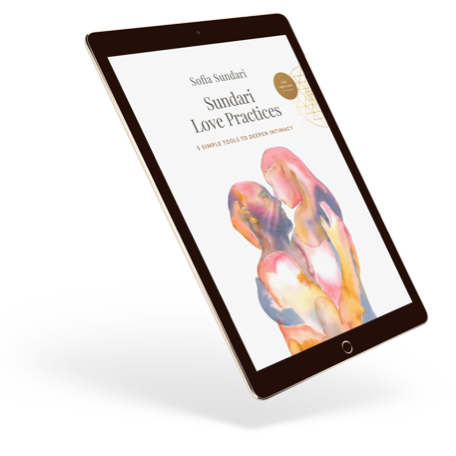
Handling menstrual flow is something that each and every woman has to deal with. Papyrus was first used in ancient Egypt, then reusable sanitary belts, and after that disposable pads. Most of these options were not that reliable until tampons were developed in the 1930′s, revolutionising feminine hygiene.
However recent research has shown that tampons can be dangerous for a woman’s health. Let’s look into the health risks of tampons and explore the healthy alternatives.
Health risk of tampons
1. Toxic Shock Syndrome (TSS)
TSS develops in the body when the common bacteria, Staphylococcus Aureus, produces a toxin which is absorbed into the bloodstream. The toxin rapidly overwhelms the immune system and attacks the major organs, leading to kidney failure, collapse of the lungs and in severe cases, cardiac arrest. Alarmingly, 50% of all known cases of Toxic Shock are result of women using tampons!
Symptoms of TSS are: sore throat, aching muscles, high temperature, vomiting, watery diarrhoea, red rash, confusion, dizziness, very low blood pressure. Only one or two symptoms may occur, and they do not necessarily occur all at once and may not persist. If you are experiencing any of these, remove the tampon right away and go to the hospital and insist on getting a blood test.
2. Chemicals in Tampons
Rayon is the main ingredient in generic tampons. It’s a fiber that is made from cellulose fibers. Cellulose is a natural fiber, but to produce Rayon chemical procedures are needed that include: carbon disulphide, sulphuric acid, chlorine and caustic soda. Side effects from exposure to too much Rayon can include: nausea, vomiting, chest pain, headaches and many others.
Tampons are also bleached using chlorine, which results in the production of dioxin, which in turn is linked to breast cancer, endometriosis, immune system suppression and various other ailments.
3. Tampons can cause infections
Tampon use causes micro lacerations (tiny wounds) every time you insert one and pull it out, leaving your vagina wall more exposed to any infection or disease.
4. Tampons disturb the PH-Balance
Tampons absorb your flow but they also absorb all the moisture that is very important to keep your ph and vagina healthy.
5. Tampons cause odor
You may remember from my previous article there is nothing toxic, dirty or smelly about our menstrual blood. But as soon as the tampon is inserted the process of oxidation starts and bacteria develops which explains that funky smell.
6. Tampons leave chemical residue in your vagina
Loose fibers are left behind in your vagina, which your body eventually flushes out but until then you have chemicals stored in your body and these can cause bladder or vaginal infections, and TSS. Some of the fibers might also get stuck in the cervix, which might cause uterine infection.
If you want to test this, take a tampon and jiggle it in a glass a water and see what happens to the fibers!
7. I’ve heard some people say that some tampons have special chemicals that make you bleed more. So you buy more.
I couldn’t find references to this in reliable sources, so I can’t confirm it but still feel it’s worth mentioning it here. If you have information on this – please share with me.
Now quite a lot of organic tampons are available on the market, which is of course a better option, and yet you see that some issues here very much relate to any kind of tampons .
Alarming, isn’t it?
The best thing you can do for your vagina is to stop using conventional feminine hygiene products. Not only tampons, but also pads are full of perfumes, chemicals and materials that can cause internal abrasions as well as irritate your vagina.
It’s important to keep in mind that tampons are still on the shelf because we buy them!
Healthy And Efficient Alternatives To Tampons
1. Reusable cloth pads
The only difference with these pads is you simply wash these pads at every use like you do with underwear. They are usually made of organic material (cotton, bamboo, hemp) so they are breathable unlike the disposable ones. You can prewash them right after use (it makes it much easier) and throw them in the washing machine without any problems.
I like using them on the last days of my cycle when there’s hardly anything. Although some of these pads are designed for heavy days too. There are lots of cute designs available these days that are comfy and practical. They are a cost-effective option and are also safe for the environment.
One possible discomfort with these is that some have a tendency to slide on your underwear. It might take time to find the right way to fix them or play around with different brands.
GladRags is a brand that I use and can recommend.
2. Menstrual cups
These flexible silicone menstrual cups are inserted into the vagina and catch all of the menstrual fluid. The menstrual cup can be emptied as often as you like, normally up to every 12 hours or so. Trust me on this one, it’s a much safer solution than inserting a chemically treated synthetic tampon into your vagina. Since a single menstrual cup can be reused again and again for years (some say up to 20 years – easy), it’s a very cost effective option (the price is anywhere between $25 and 40) that generates no waste. I’ll let you do the maths yourself!
It’s worn internally like a tampon but without the string and other health inconvenience. Plus it’s comfortable and when inserted properly does not leak.
I must warn you – inserting (and removing) a cup correctly can take a couple of tries to get the hang of it. It is a little hard to fold and maneuver at first. See image on the right for instructions on inserting the cup. A tip here – once you’ve inserted the cup, you might want to squeeze it again to let the air out – it will create a vacuum that will secure the cup. Also you can try to rotate the cup a little for the same reason. It will also help you find the most comfortable position. Once the cup is inserted properly you should not feel it at all.
In the beginning some women choose to use a reusable cotton pad in addition to the moon cup. But once you are used to it there is no need for extra security.
Once you put your cup inside, trim the stem to fit you.
The more you use it, the more flexible and soft it becomes.
You can sleep with it safely and practice any sport including swimming.
Made in 100% medical silicone (Diva Cup) or organic rubber (The Keeper), they’re hypoallergenic and won’t leak any chemicals in your body. Diva Cup, MoonCup, Keeper and Lunette are FDA approved.
It doesn’t interfere with your natural Ph since the cup doesn’t absorb anything, and thus doesn’t dry your vagina, it only collects your flow, keeping your moisture intact. Unlike pads, there’s no wet feeling or butcher shop smell, and maintenance is dead easy (boil or wash with mild soap).
The cup sits low in the vaginal canal, which means it will not get lost in your uterus, irritate or even come into contact with your cervix.
Also, a menstrual cup gives you an opportunity to see with your own eyes how much you bleed. I think it’s important – you establish a mind – body connection. You don’t see much blood on a pad or in a tampon because most of it gets soaked inside. But with the cup, you get to face your blood head on. This is exactly how much you bleed, and guess what? It’s totally normal.
And you get a choice of what to do with the blood. In my previous article I was saying how precious and full of power and nutrients our menstrual blood is. Why would you want to flush something so precious down the toilet? One of the great things to do with your blood is to put it in a cup, and offer it back to nature. You may experiment with watering a plant with water mixed with your blood and see what happens to it. Expect surprises!
Interesting that menstrual cups have actually existed since the 1930′s – when the conventional tampons were created., but in the face of the billion dollar tampon industry they sadly did not survive the competition and lobbying. Menstrual cups have been becoming more popular the last few years simply because we have more and more awareness concerning our health and the environment.
Menstrual cups all look similar but range in length, volume, shape, stem type, softness and even colour. Check out the LiveJournal Menstrual Cups community for advice and measurement charts. There are almost 20 brands available. The most important factors seem to be cervix height and desired volume. Women who have given birth vaginally often do better with the larger diameter cups. It’s specified if the cup will best fit for women who have given birth or not.
I’ve been using the Keeper for the last 4+ years. I like it because it’s made from all-natural gum rubber and could even be composted if I don’t want to use it anymore. If you’re allergic to latex, then the Keeper won’t work for you. Diva Cup, MoonCup and the Keeper are the three brands that I’ve heard great feedback of.
Good luck with your conscious choices and feel free to ask me questions and share your experiences. I will be happy to hear from you!
Happy period!
Lets get connected. Join the tribe of 100k+ like-hearted souls and follow me on

Get your free ebook
Sundari Love Practices
5 Simple Tools To Deepen Intimacy
